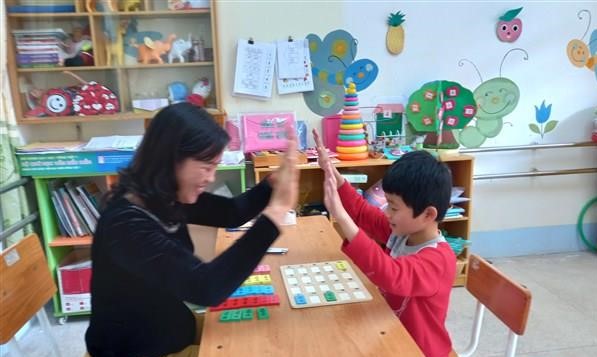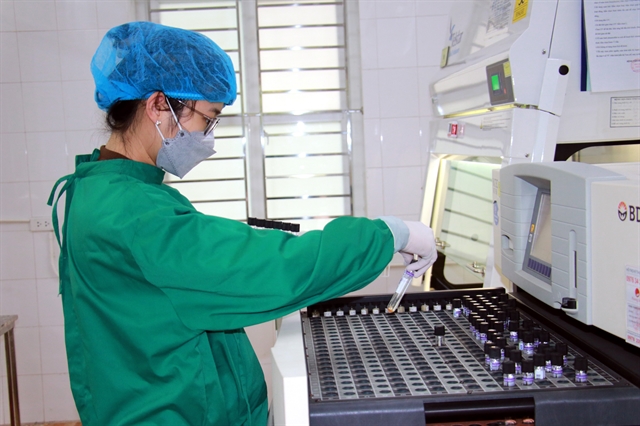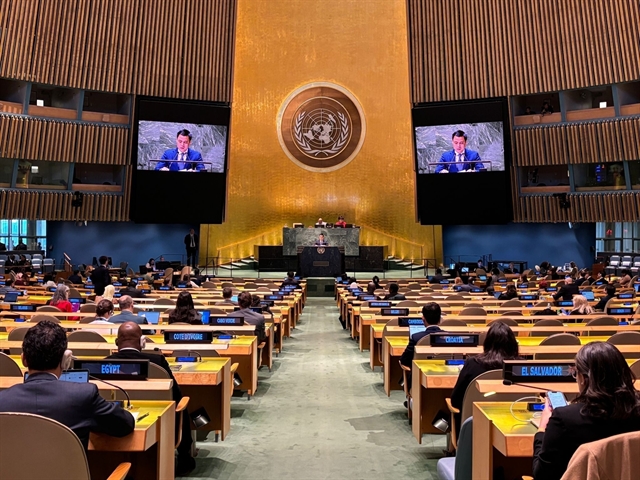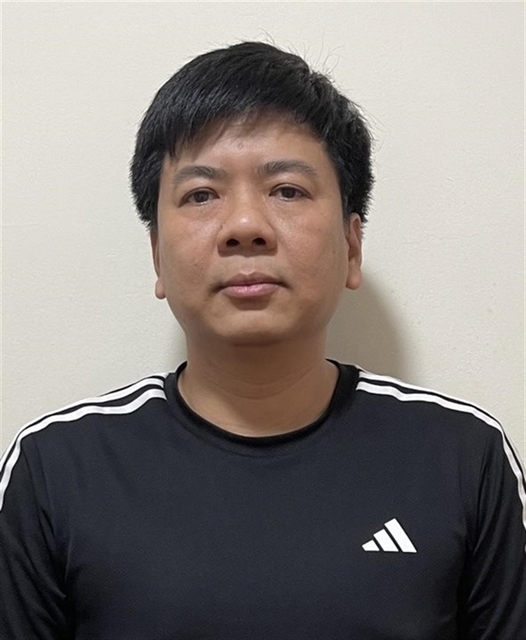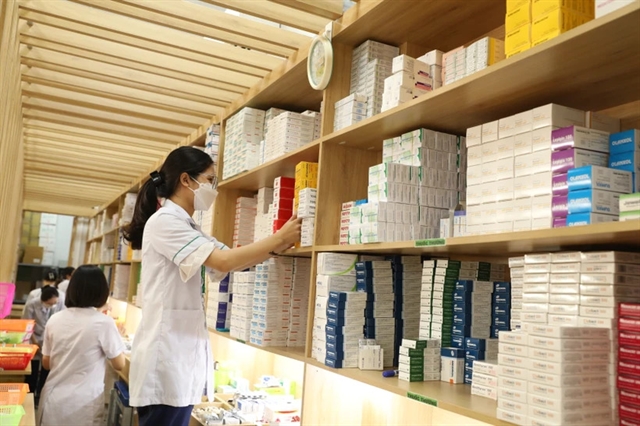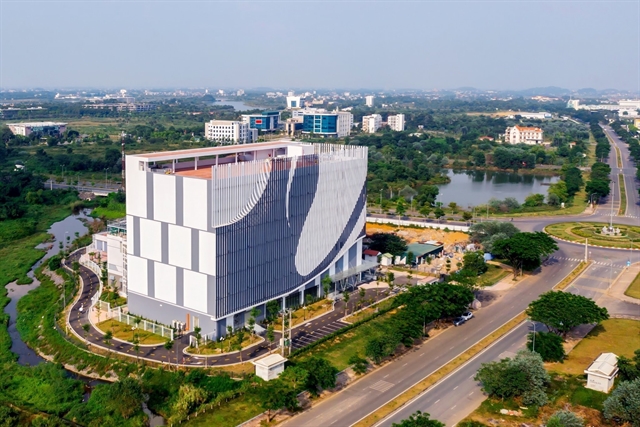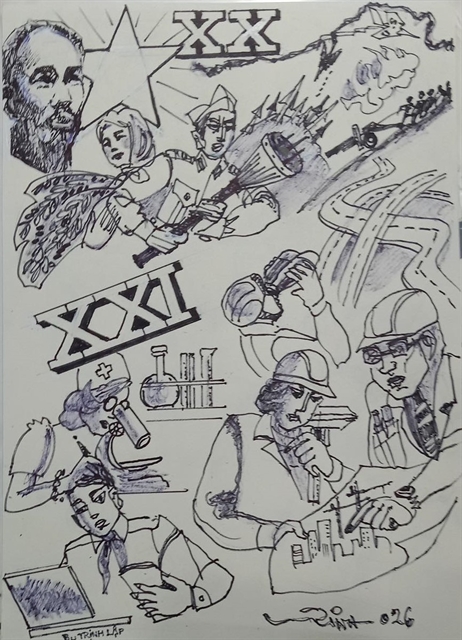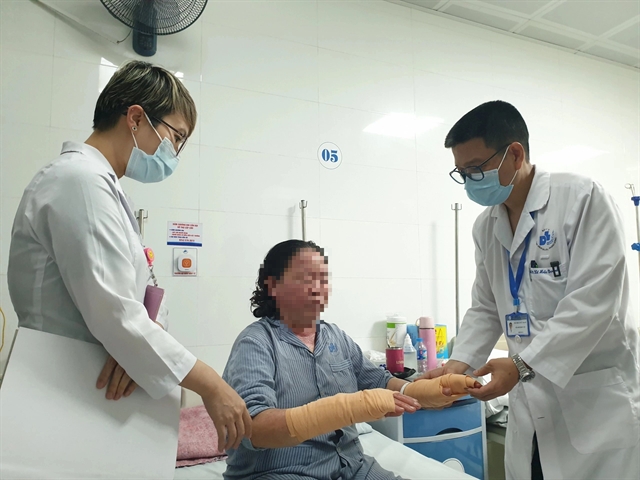 |
| Doctors examine a leprosy patient at the National Hospital of Dermatology and Venereology. — Photo suckhoedoisong.vn |
HÀ NỘI — After more than 20 years of being involved in leprosy prevention, Associate Professor Lê Hữu Doanh still vividly remembers the arduous days when he and his colleagues went to remote mountains and forests to search for leprosy pathogens in the community.
Doanh, who is Director of the National Hospital of Dermatology and Venereology (NHDV), said that despite difficulties, the doctors had gone from the northwestern mountains to the Central Highlands, then to HCM City to investigate leprosy epidemiology with the goal of early detection and timely treatment, minimising disability for leprosy patients.
"We prepared medical equipment and medicines, thinking we had enough for an epidemiological investigation trip. But we didn't expect there would be so many leprosy patients. Hundreds or even thousands of new patients were discovered in a year," said Doanh.
Medical staff had to go to every village to examine patients, even if they were just suspected cases. They could not ignore these cases, because they would not return until months later. Suspected cases could become deformed lepers with disabilities for the rest of their lives.
“There were also tragic cases when the leprosy patient was the only person left in the family. Without relatives, they could not take care of themselves and could only survive day by day. Life was a torment of illness and lack of everything. Medical staff had to take patients to the leprosy treatment stations to receive comprehensive care,” he said.
Strategy
For a long time, leprosy was considered an incurable disease.
People with this disease were discriminated against and shunned because of severe disabling deformities in their arms and legs.
The National Leprosy Prevention Programme starting in 1995 has greatly changed the community's awareness of this disease.
People are no longer afraid of or discriminate against leprosy patients.
The misconception about leprosy is no longer as serious as before.
When people suspect they have leprosy, they go to a medical facility for treatment instead of hiding their illness like before.
Việt Nam has met the World Health Organisation (WHO) leprosy elimination standards since 1995, with a prevalence rate of 0.9 patients per 10,000 people.
The United Nations General Assembly also recognised Việt Nam as a leading country in the Pacific region in leprosy prevention.
Over the past years, the national anti-leprosy programme has achieved many positive results.
The rate of leprosy patients is decreasing and the disease is no longer a public health problem.
However, even assuming the leprosy epidemic continues to be steadily reduced year by year, experts predict that it will still take nearly 40 years to eliminate it.
To shorten this period, Doanh said that this year, the leprosy prevention programme would launch a new strategy that would have a stronger impact.
It is expected that in about 30 years there will be no more leprosy patients, through strong interventions in the community, especially among those in contact with leprosy patients.
"Currently, there is no preventive treatment in the strategy, but only early detection and treatment for patients. This year, we will promote examination and medicine distribution for prevention,” said Doanh.
People who have contact with leprosy patients will have one dose and then they will have minimal risk of contracting the disease.
This will help quickly reduce the number of new leprosy patients in the community.
“Hopefully in the near future, there will be no germs of leprosy bacteria living, growing or spreading in Việt Nam," he said.
Improve patients’ quality of life
Last year was the first year that the NHDV implemented a free-of-charge surgery programme for 30 disabled leprosy patients in northern provinces.
It was one of numerous activities to support diagnosis, treatment and care for people with leprosy and severe skin diseases since 1990, funded by the Việt Nam – Switzerland Anti-Leprosy Association.
This is a meaningful humanitarian effort to improve the quality of life for disabled leprosy patients, helping them integrate into society more easily.
As one of the first disabled leprosy patients to receive surgery, Đặng Thị L., 64, from Chương Mỹ District in Hà Nội, felt emotional thanking the doctors and nurses who helped her.
L. has been treated at the Quốc Oai Leprosy Treatment Station, now called NHDV Branch 3, since 1999.
For about 10 years, she had ulcers on her right foot.
Recently, the lesions have become larger.
Doctors diagnosed her with squamous cell carcinoma, which is a consequence of leprosy.
L. was sponsored by the project for treatment costs, cancer lesion removal, food and travel expenses.
After surgery, L.'s health recovered well.
Another case is Nguyen Van B.,49, from Tân Kim Commune, Phú Bình District, Thái Nguyên northern province.
He was admitted to the NHDV at the end of February last year.
He has been treated at the Phú Bình Leprosy Treatment Station in Thái Nguyên Province.
B. had his left leg amputated in 1998 due to a foot ulcer.
Recently, he had an ulcer on his right foot. Over the past year, the damage has progressed rapidly and the warts have spread.
Now he has received surgery to remove the cancerous lesion. After surgery, his health recovered quickly.
Doanh said that this year, the humanitarian project would continue to treat about 50 disabled leprosy patients with free surgical support. — VNS
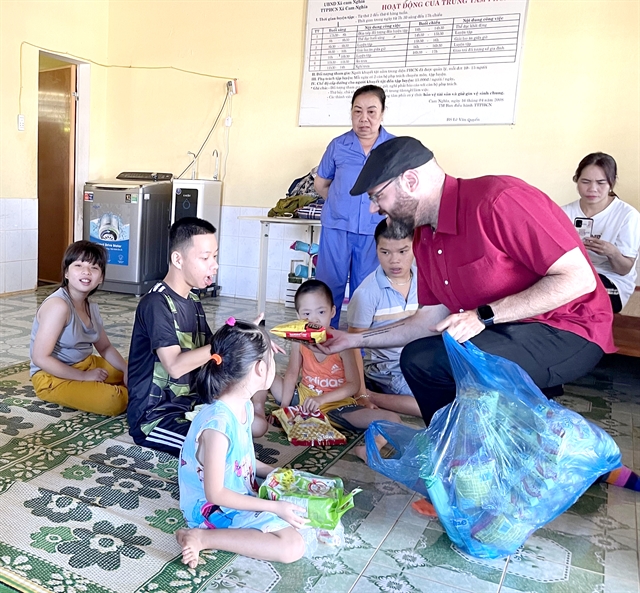 Society
Society

